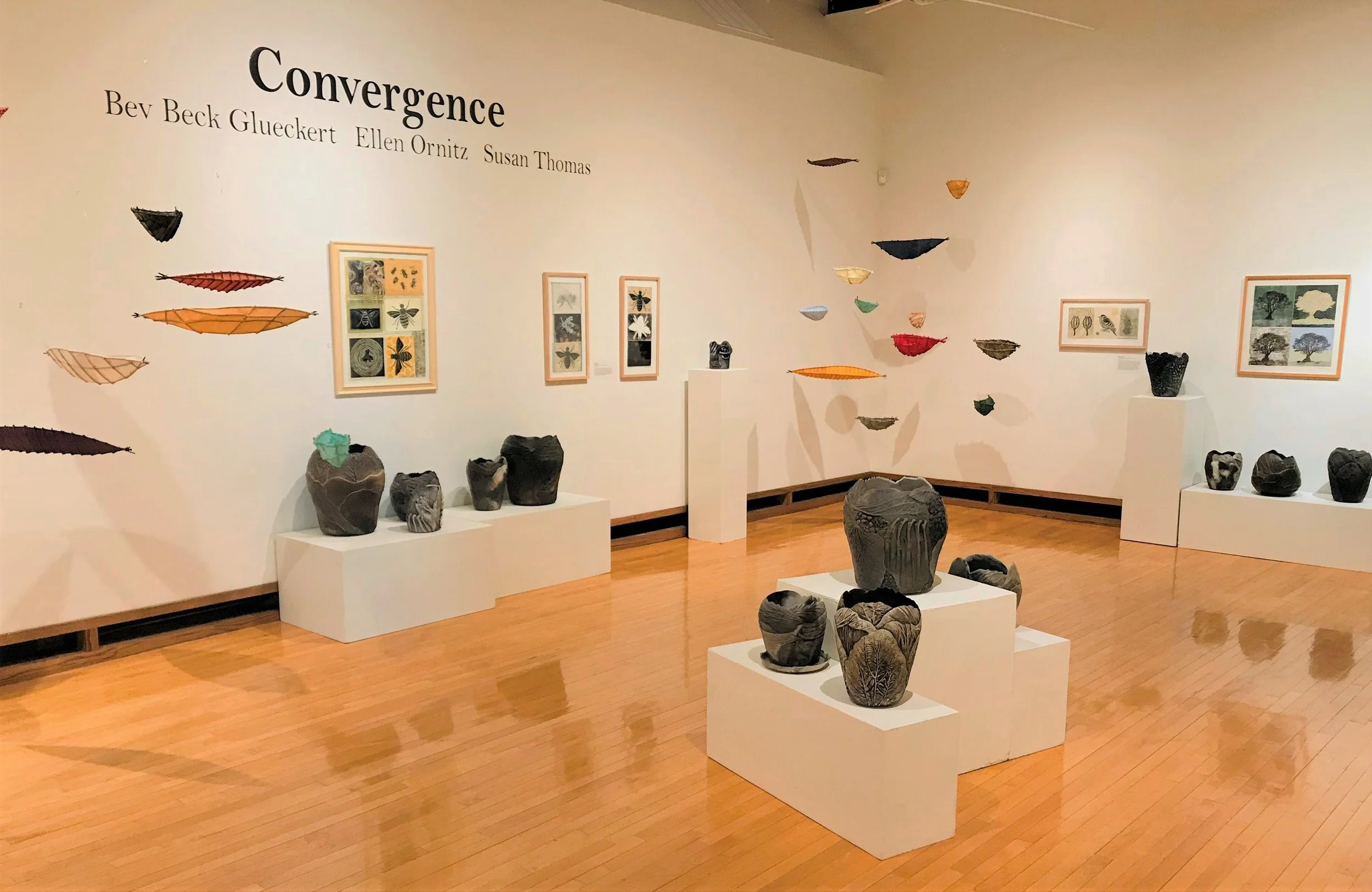CONVERGENCE
Bair Gallery Holter Museum, Helena
These three exemplary Montana based artists bring their methods, media, and specific lenses of artistry to the Holter in Convergence.
Using primitive firing methods, Ellen Ornitz creates ‘burnt fossils’, pairing her exposure and involvement in Montana’s rich tradition of contemporary ceramics with her fascination with archeology and historical and ancient pottery.
Bev Beck Glueckert explores themes of transformation and survival, exposing poignant and vulnerable aspects of the natural world. A variety of printmaking techniques combined with various collage media provide layered narratives that reflect the fragile nature of our shared environment.
Susan Thomas, whose work is rooted in the natural world, creates paper, willow, and cottonwood vessels that float in space, and recall both nature and order through patterns, grids, and spatial division, allowing viewers to linger between concepts of human-made or naturally occurring form.
The convergence of these artists creates an exhibit that makes space for the appreciation and wariness of nature, of artifact, of form, and of human involvement in the natural world.
—Ramsay Ballew
Exhibits Curator, Holter Museum of Art, Helena, Montana





BURNT VESSELS ceramic vessels
Missoula Art Museum
Ellen Ornitz presents ceramic vessels created during the pandemic isolation as an extension of her sculptural practice. In keeping with her fascination with the excavations in Pompeii and Iron Age “bog” bodies (dating 800 B.C.–A.D. 200) from Northern Europe, Ornitz’s primitive-fired pottery is intended to look unearthed and fossilized.
She says of the series, called Burnt Fossils,
"Living in Montana for the past 47 years, I have been happily inundated with this ceramics community and the opportunity to explore contemporary themes in ceramics. My work is informed by this fortuitous exposure along with my lifelong fascination with primitive pottery and archaeology. Time-scoured artifacts of ancient cultures have shaped my aesthetic along with an enduring appreciation of natural forms and their residue.
After years of creating ceramic and mixed media sculpture, I decided to take a hiatus and focus on the ceramic vessel form. Making pots became the mantra of my pandemic meditations. The practice was so engaging that a six-month sabbatical has extended into several years. These vessels are created through the contemporary practice of layering and assemblage of press-molded forms, followed by numerous primitive-firing techniques. Given such influences, these vessels are intended to look unearthed and fossilized; the forms and processes have coalesced into the current narrative."
— Brandon Reintjes
Senior Curator, Missoula Art Museum
Missoula, Montana
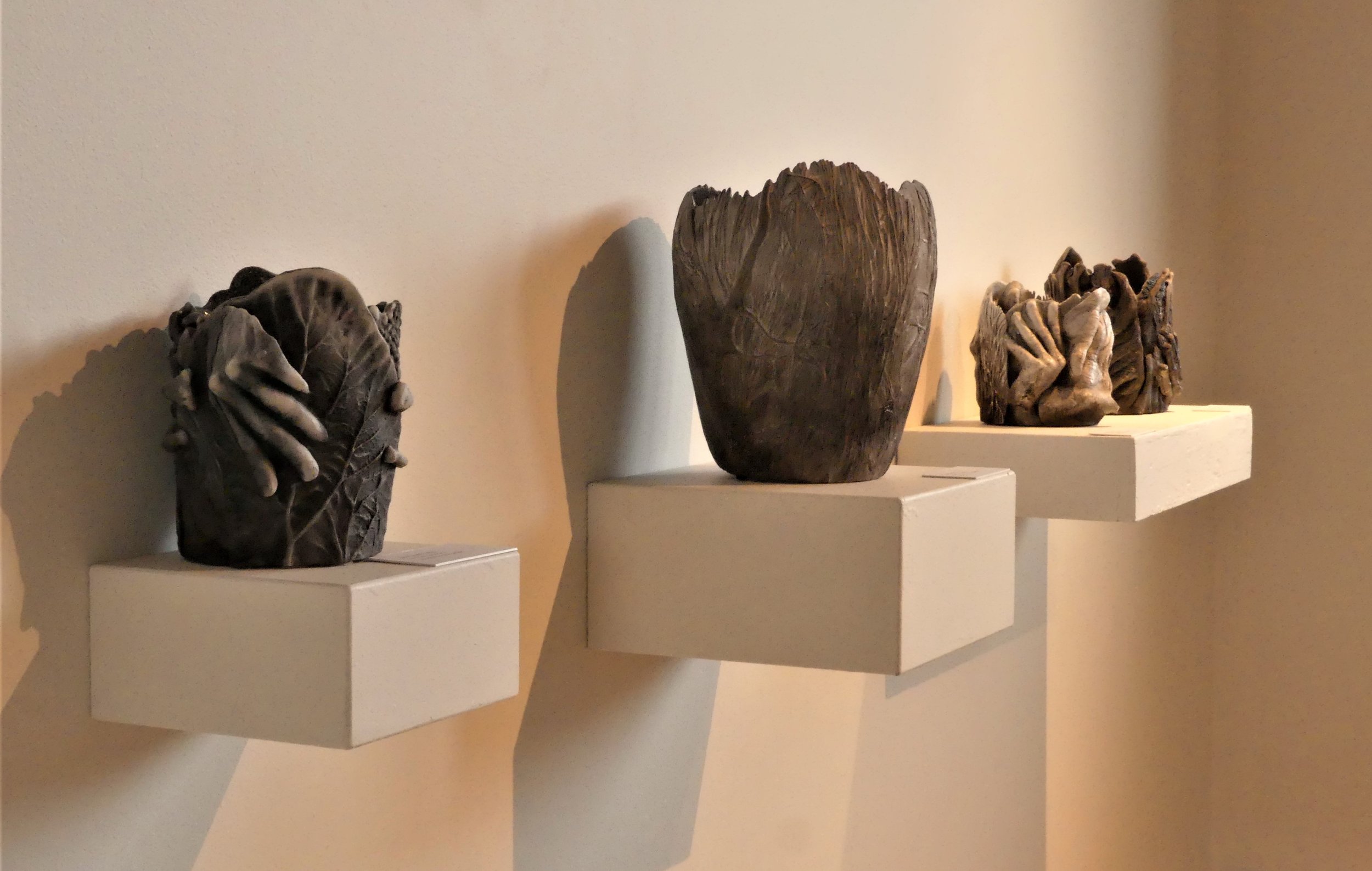
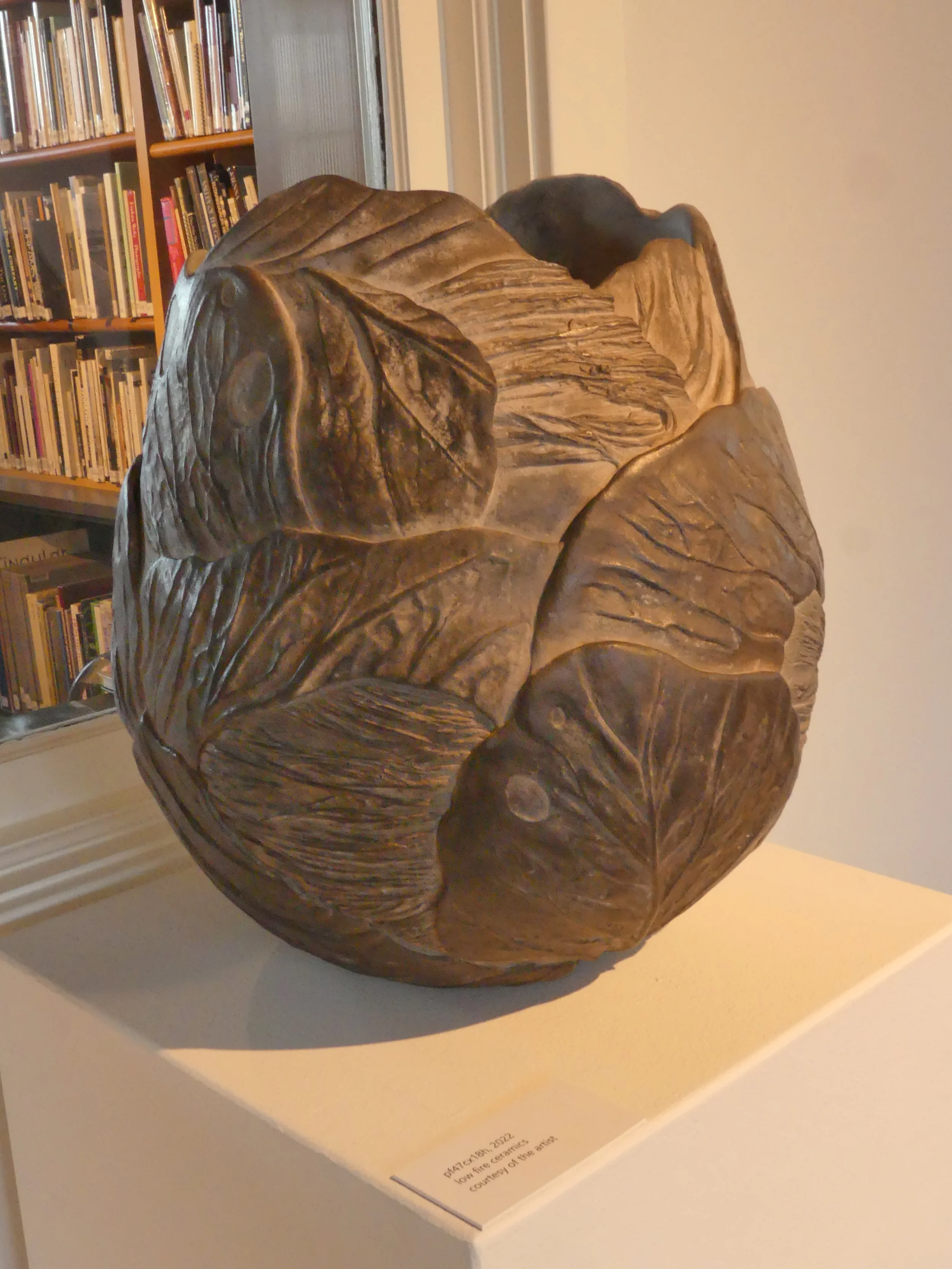
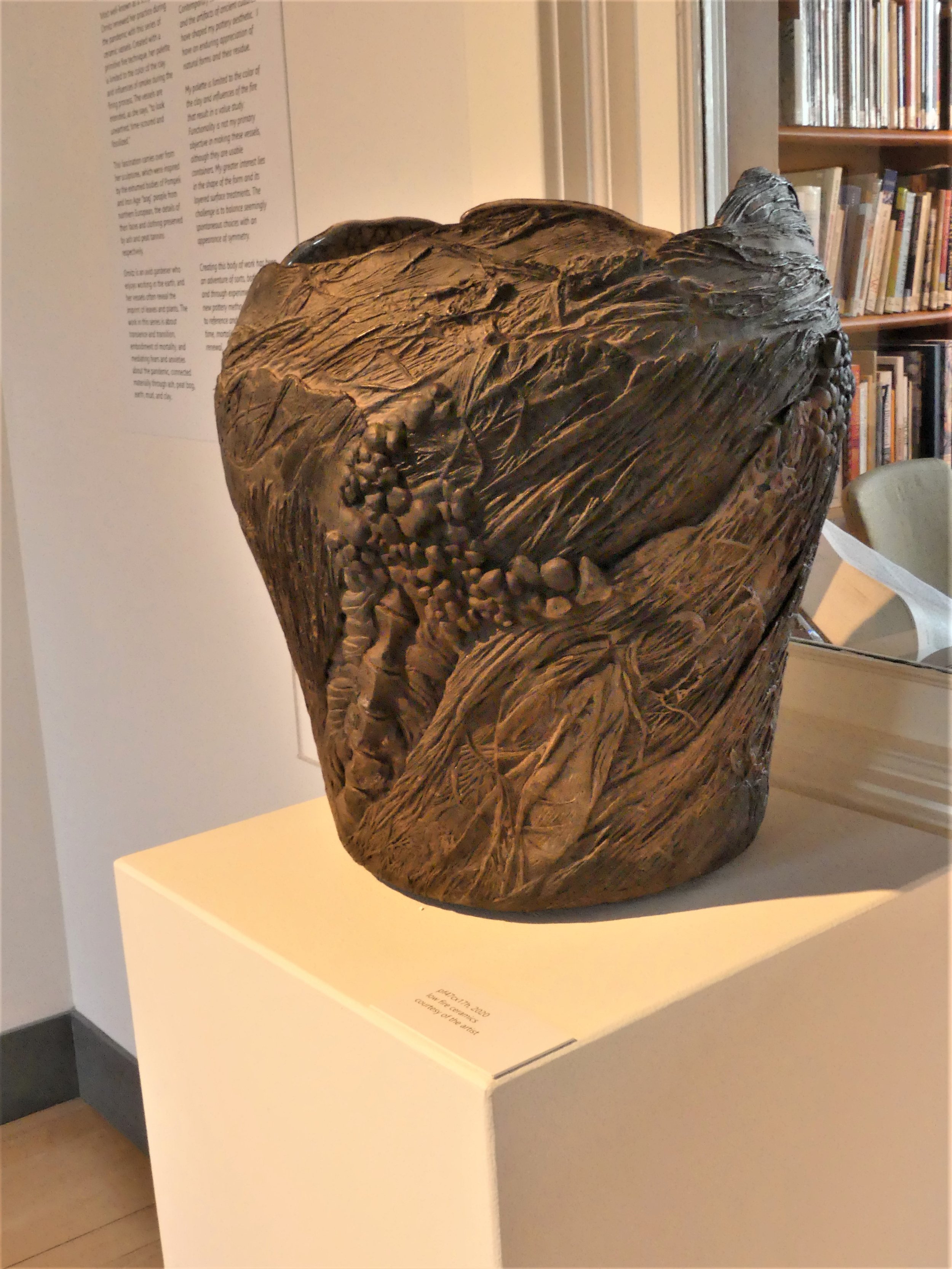
CONVERGENCE: Ellen Ornitz
with Bev Beck Glueckert and Susan Thomas
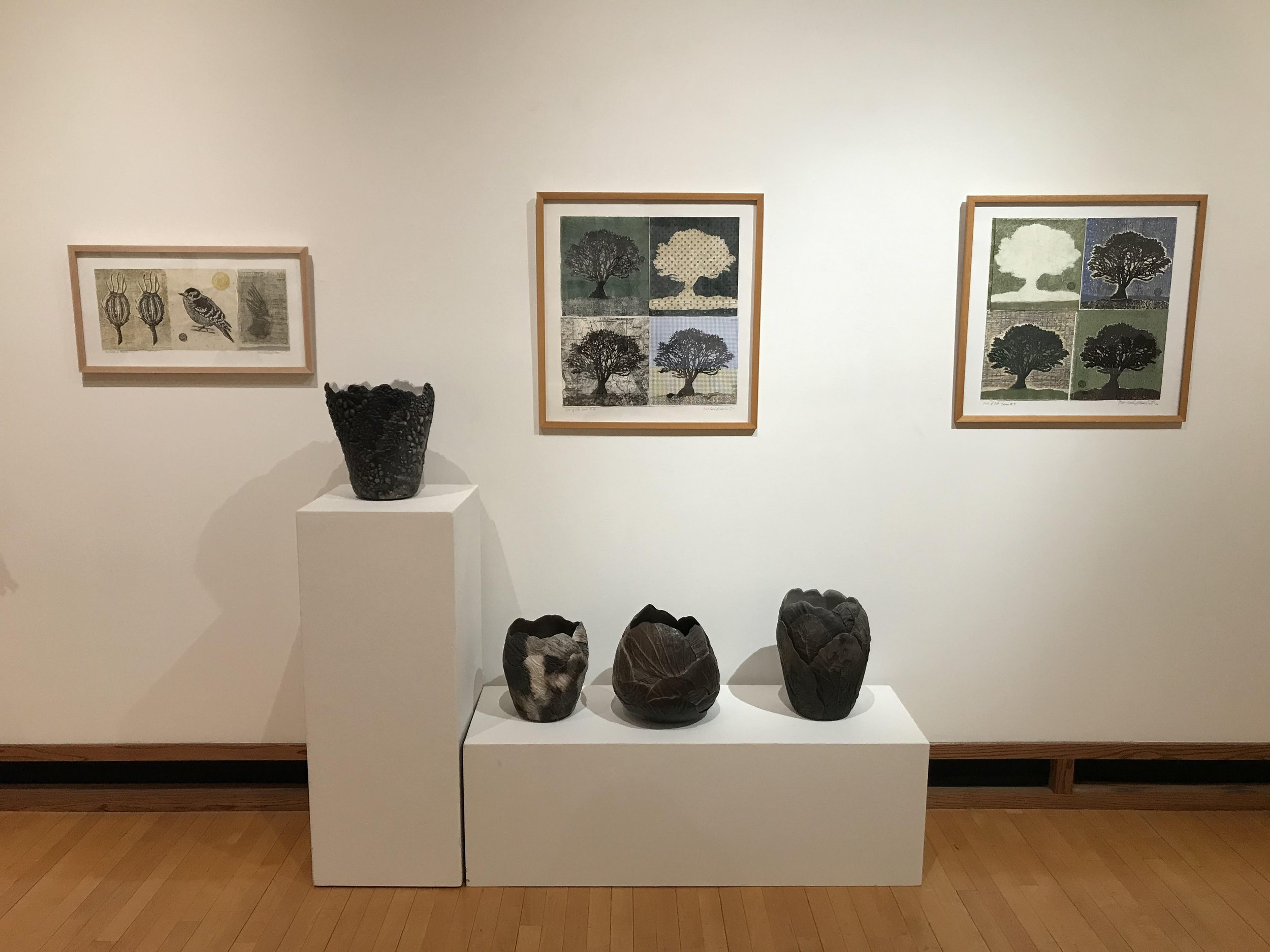
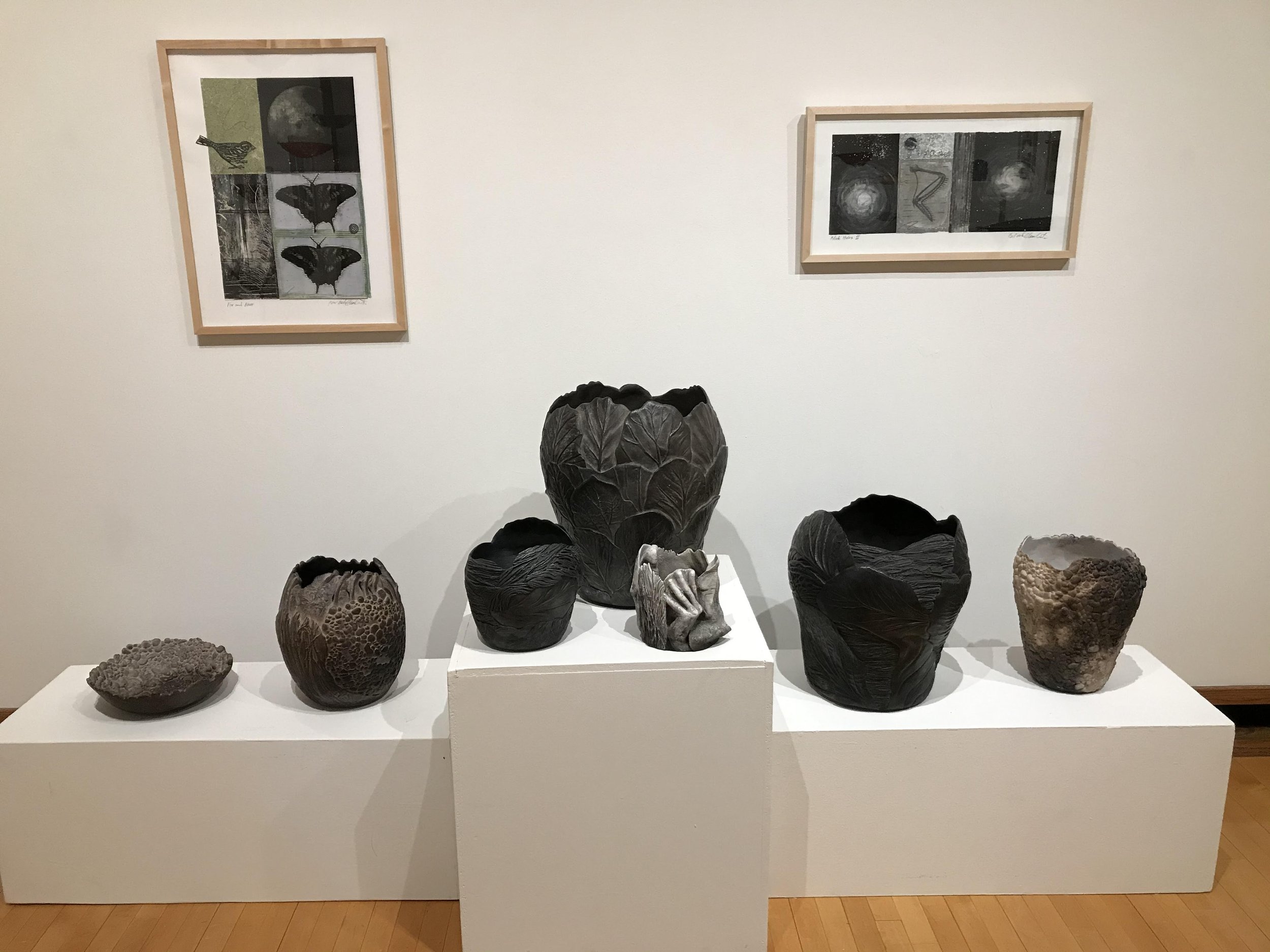
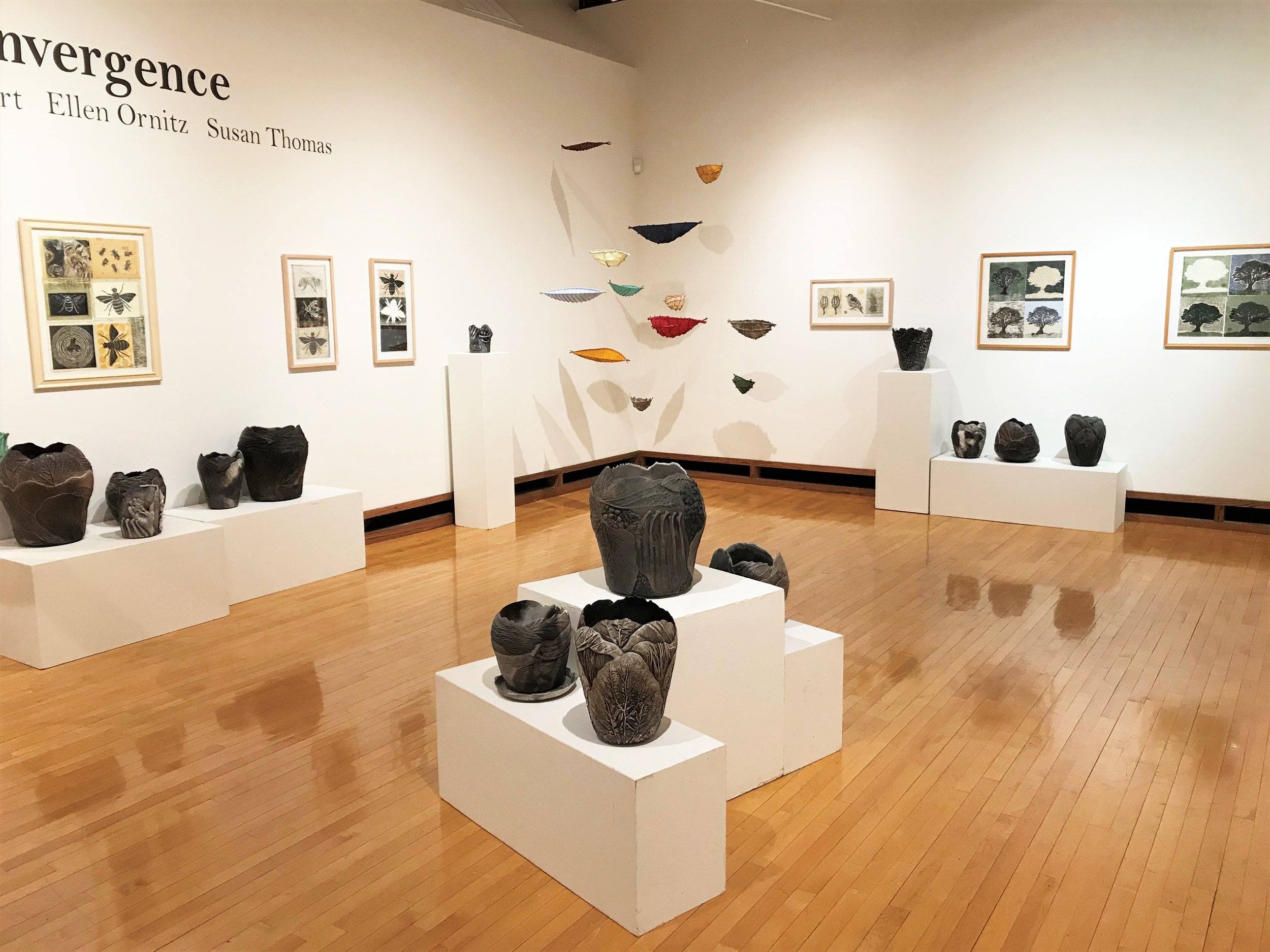
For Ellen Ornitz, there is a direct correlation between her primitive fired ceramic vessels and the natural elements harnessed to bring the works into being. She grapples with taming the primitive firings of her vessels, or manipulating the plaster molds and clay slabs she creates to produce her pieces. They are her own, yet they retain their own natural power. Her spirit of investigation is fed by daily treks outdoors, then scavenging animal and plant material, and returning home to make art…
The pandemic made creation even more inevitable as she hunkered down at home. In her studio, she has time to experiment and engage her curiosity for materials, forms and firing techniques. Ellen’s vessels are dark, detailed and smell of fire and smoke. Bringing the visitor closer to the ash and dirt of the earth, a direct reference to the creative and destructive elements of life. Dirt and soil for growth, and fire for destruction and transformation.
— Nicole Maria Evans
Curator of Art, Paris Gibson Square Museum of Art
Great Falls, Montana


